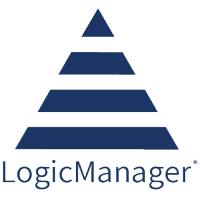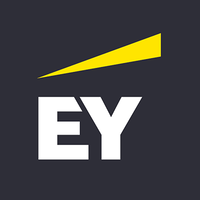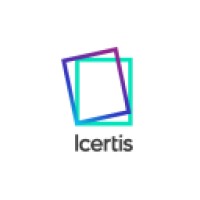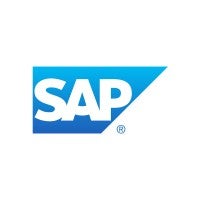

Top Risk Management Tools for Enterprise 2021
Risk management mitigates risk by measuring project data and offering insight. Compare top risk management software now.
In IT risk is real, and becomes ever more real with each passing day as the number of phishing and ransomware scams escalates. According to a study by SonicWall, the ransomware attempt volume reached more than 300 million for the first half last year, a new record. US, UK, and Germany topped the list as potential targets, with South Africa and Brazil rounding out the top five.
With ransomware attempts shooting up by almost 80 million compared to the previous six months, it would be easy for security and IT personnel to become paranoid about cyberattacks.
That’s where risk management comes in. It uses a series of enterprise risk management software tools to bring sanity to enterprise management and cybersecurity by highlighting the areas of high risk, analyzing the factors involved, and outlining how to respond to those risks. The goal is to achieve some measure of control in order to minimize future negative outcomes, and to move the organization from a reactive to a proactive stance.
The key steps of the risk management process are:
Risk management tools are used to help organizations determine the level of risk involved and predict the potential outcome. They can offer management insight and knowledge to help determine such things as whether to upgrade systems now or delay the project for a year. They also help the business evaluate its tolerance levels for risk. A large financial firm processing billions of dollars weekly might have a low tolerance for transactional downtime, for example, whereas a construction firm might be willing to have its system down for a day or two without serious problems.
Risk management tools can be complex. It frequently requires consultants to help implement the technology, establish the processes, and groove in personnel. Risk management software can include many different functional areas spanning all ends of the organizational spectrum: IT and security risk management, audit management, compliance management, digital risk protection, privacy management, business continuity, inbound third-party risk management, and outbound third-party vendor risk management.
“Given the breadth of capabilities within risk management solutions, it is advisable to stage a deployment over time, implementing modules gradually,” said Rick Holland, Chief Information Security Officer, Vice President Strategy at Digital Shadows. “Instead of trying to set up all risk management aspects out of the gate, start with a few modules and slowly implement it.”
To succeed, organizations must have a clear understanding that no matter how strong their technology may be, it is the people and process aspects that must be prioritized in risk management — otherwise failure is inevitable. Risk management tools today are growing in scope to encompass third-party software, supply chain partners, and customer portals. Holland noted the recent SolarWinds, Accellion, Microsoft Exchange/Hafnium, and Kaseya events. These, he said, have reprioritized the importance of third-party vendor management.
“Now more than ever, defenders must be able to move beyond static vendor assessment questionnaires to ongoing monitoring of their supply chains,” said Holland. “Point in time assessments might be acceptable for checkboxes but aren’t sufficient when trying to reduce the risk from your business partners.”
Also read: Managing Security Across MultiCloud Environments
The various risk management software packages out there take different approaches to risk. Some zero in on cybersecurity, others go end to end in the enterprise taking in all facets of organizational risk. This can include planning, budgets, financials, physical and cybersecurity, and more.
Enterprise Networking Planet evaluated a number of risk management software platforms. Here are our top picks in no particular order.

Resolver equips enterprises with a picture of their risk, enabling them to make decisions to move their business forward and grow faster while ensuring their people and assets are protected.
Key Differentiators

JupiterOne uses its own platform to understand the risk in any environment. The JupiterOne cyber asset management and governance platform provides visibility into cyber assets as well as providing a deep understanding of the current state of those assets. Understanding the relationships between the assets is the final component that helps to detail threats and assess risks.

LogicManager risk-based solutions offer an enterprise-wide view of risk management processes. Its Enterprise Risk Management (ERM) software connects enterprise risk management, governance, and compliance activities in one centralized hub.
Key Differentiators

Pathlock’s capabilities focus around treating and monitoring risks through automating detective and preventative controls. Automating controls allows companies to monitor and remediate risks in real time, as they surface. Many companies approach risk solely through the lens of annual compliance driven audits. It allows companies to constantly assess and respond to risks in real time, to ensure timely action.
Key Differentiators

EY (formerly Ernst & Young) focuses on financial organizations, but its capabilities go beyond finance to include cyber-risk. It includes planning and profitability improvement, compliance, actuarial transformation, regulatory reporting, and more. It provides a team of experienced consultants to assist with the creation of a risk management program.
Key Differentiators

The focus of Icertis is on contract management and risk. But from there, it offers a general risk management platform that goes into many other aspects of governance, risk, and compliance (GRC). It identifies, assesses and manages all contract risks and ensures the fulfillment of obligations based on insights from compliance tools.
Key Differentiators

SAP’s GRC offering is composed of modules revolving around SAP HANA in-memory analytics. These modules include SAP Risk Management, SAP Process Control, SAP Audit Management, and SAP Business Integrity Screening. In-memory data access gives top of the line big data and predictive analytics capability that is tied to risk management. It enables organizations to automate and manage risks, controls, identities, cyber threats, and international trade across the enterprise with embedded analytics and artificial intelligence.
Key Differentiators

Navex offers an integrated risk and compliance program to mitigate risk and leverage compliance. Its 360-degree view of risks across the enterprise includes modules for Ethics & Compliance, Environmental, Social, and Governance, and Integrated Risk Management.
Key Differentiators
Read next: Employing SIEM in the Network Security Fight

Enterprise Networking Planet aims to educate and assist IT administrators in building strong network infrastructures for their enterprise companies. Enterprise Networking Planet contributors write about relevant and useful topics on the cutting edge of enterprise networking based on years of personal experience in the field.
Property of TechnologyAdvice. © 2025 TechnologyAdvice. All Rights Reserved
Advertiser Disclosure: Some of the products that appear on this site are from companies from which TechnologyAdvice receives compensation. This compensation may impact how and where products appear on this site including, for example, the order in which they appear. TechnologyAdvice does not include all companies or all types of products available in the marketplace.